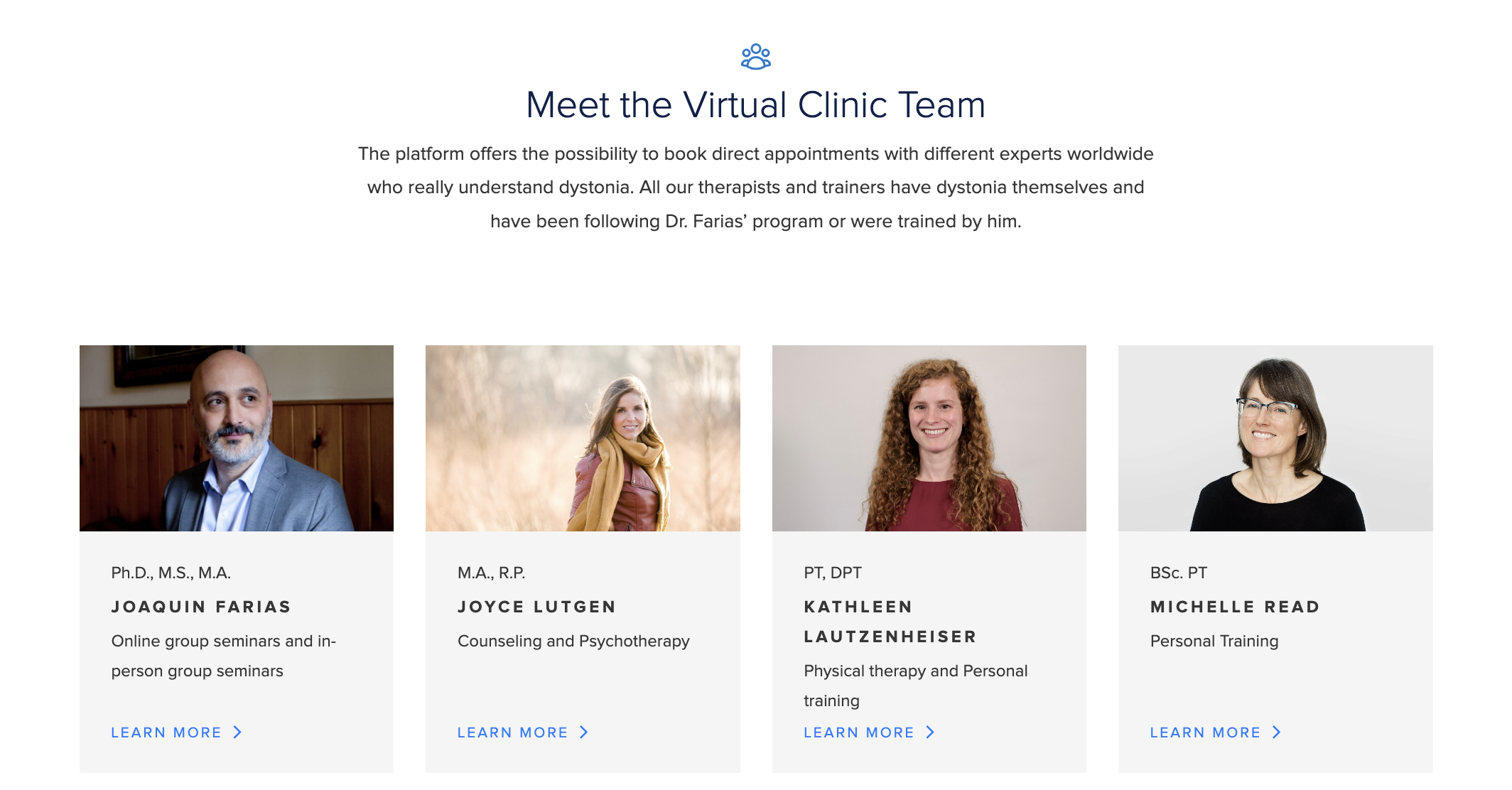Understanding Foot Dystonia
Foot Dystonia manifests as involuntary contractions in the muscles of the feet, leading to symptoms like curled toes, a clenched foot, or painful cramping. These symptoms disrupt activities such as walking, standing, and wearing shoes, profoundly affecting an individual’s overall well-being.
Dr. Farias’ Neuroplastic Movement Therapy is an innovative approach designed to target specific problematic movements and overall movement patterns in the body. The therapy aims to identify neural dysfunctions contributing to Foot Dystonia and systematically reprogram them to promote more desirable movements.
Incremental Task Conditioning
Integral to the therapy is the concept of incremental task conditioning. This technique facilitates a gradual transition from existing problematic movement patterns to healthier alternatives. By introducing and reinforcing positive changes step by step, the therapy aims to create sustainable improvements.
Strength Training and Repetitive Task Performance
Incorporating strength training and repetitive task performance, Dr. Farias’ approach guides the brain toward adopting more desirable movement patterns. These elements enhance the brain-body connection, empowering individuals to exert greater control over muscle movements in the affected foot.
Individualised Exercises for Foot Dystonia
The hallmark of Dr. Farias’ therapy lies in its highly individualised nature. Tailoring each treatment plan to the patient’s specific condition, preferences, and lifestyle ensures seamless alignment with individual needs. This personalised approach maximises the potential for successful outcomes.
Join Our Community!
As we explore innovative solutions for Foot Dystonia treatment, we invite you to join our community. Stay informed, connect with others sharing similar experiences, and embark on a collaborative journey toward relief and improved well-being.
Conclusion
In conclusion, Foot Dystonia, marked by symptoms of curled toes, a clenched foot, or painful cramping, presents significant challenges. However, Dr. Farias’ Neuroplastic Movement Therapy offers a practical and personalized strategy for those seeking relief. Incremental task conditioning, strength training, and the highly individualized approach make Dr. Farias’ therapy a promising avenue for individuals navigating the complexities of Foot Dystonia. Stay connected, stay informed, and together let’s pave the way toward a more comfortable and fulfilling life.
Physical Therapy for Dystonia. The Future of Neurorehabilitation
Start your Recovery Journey Today
Join the complete online recovery program for dystonia patients.



